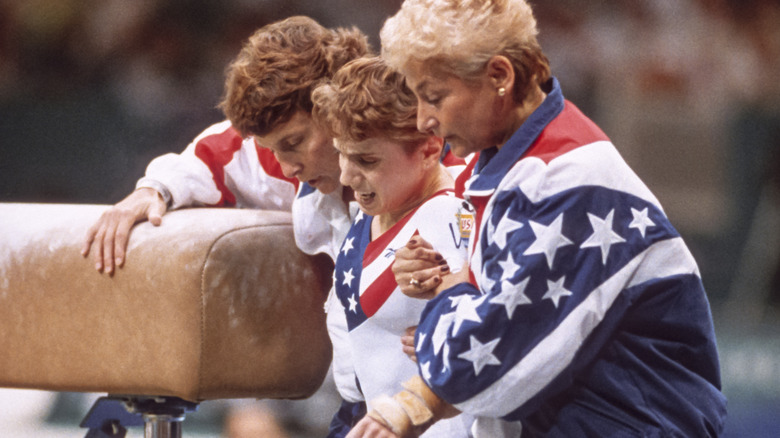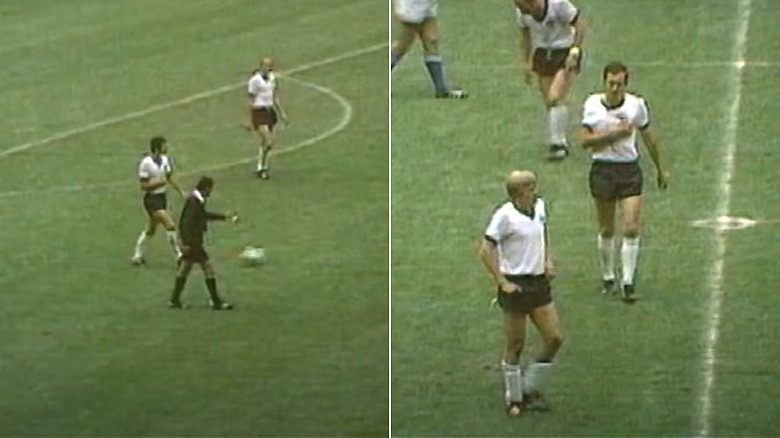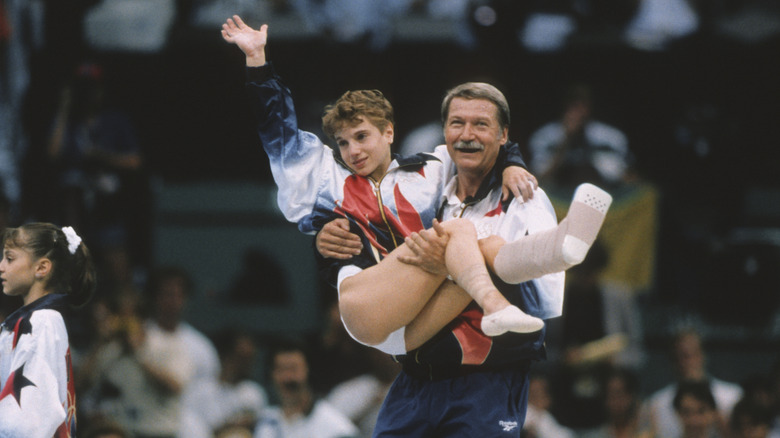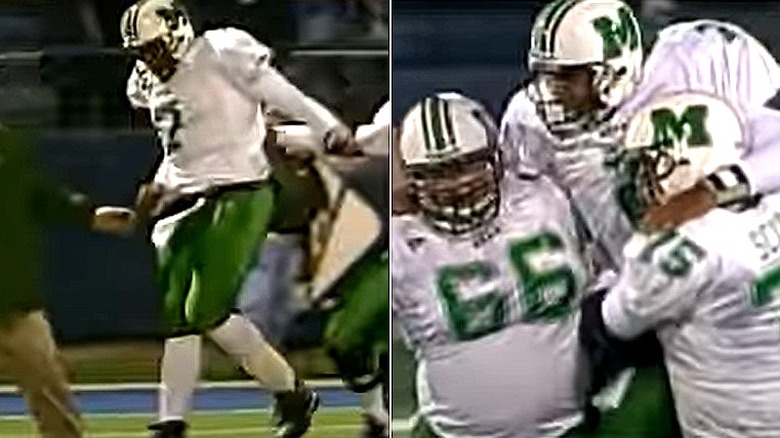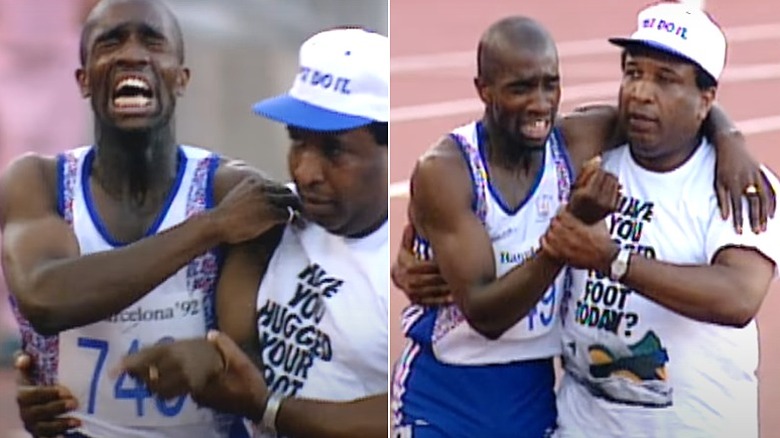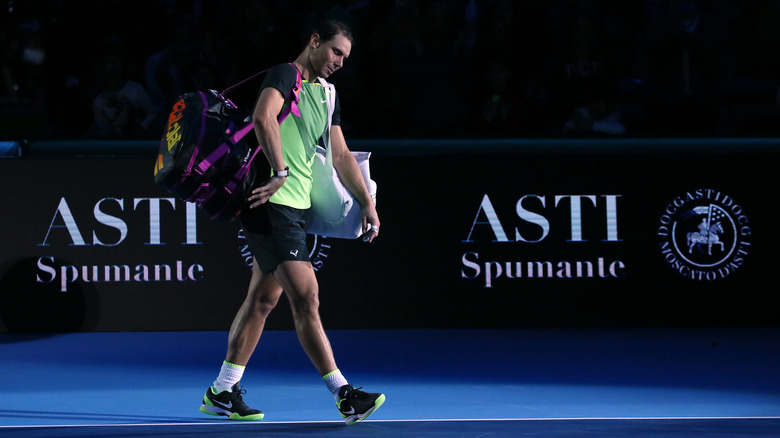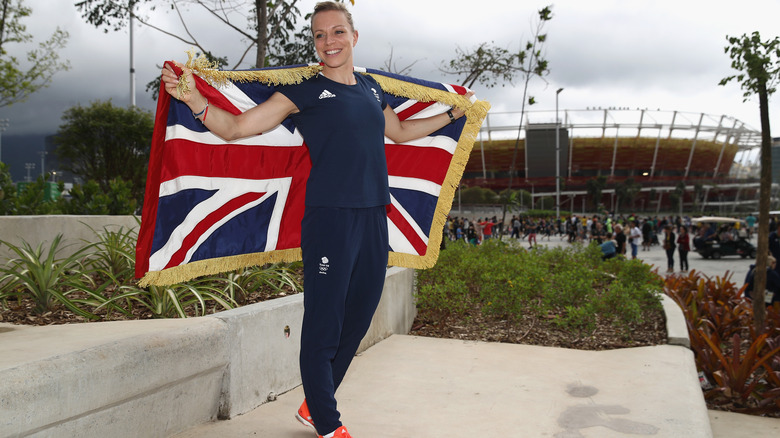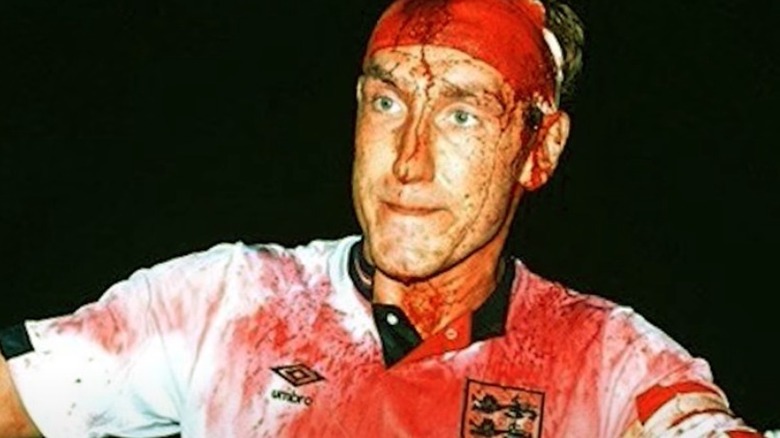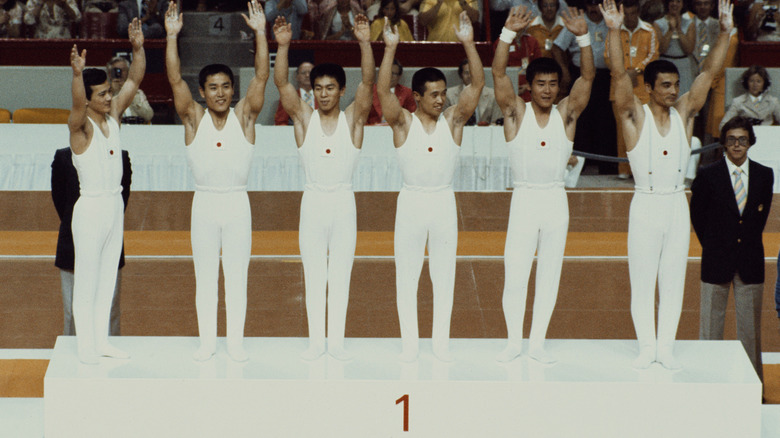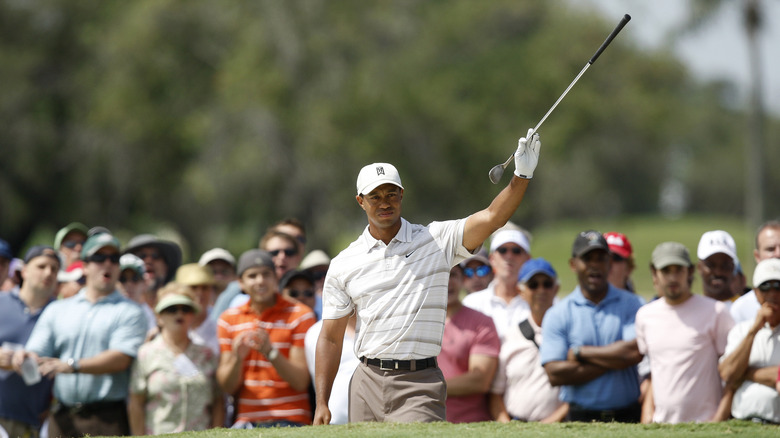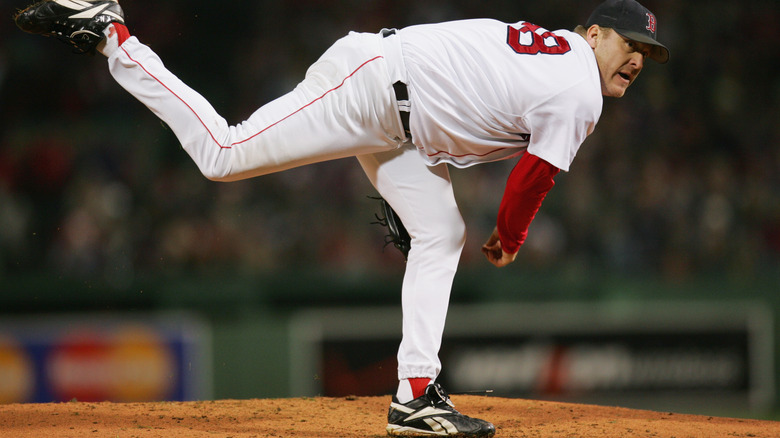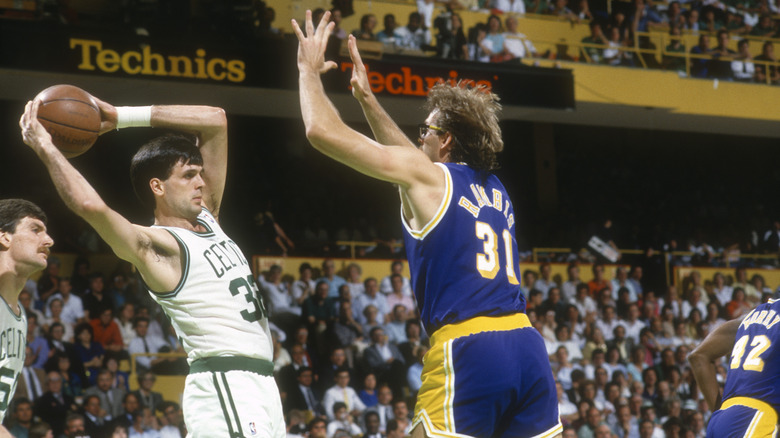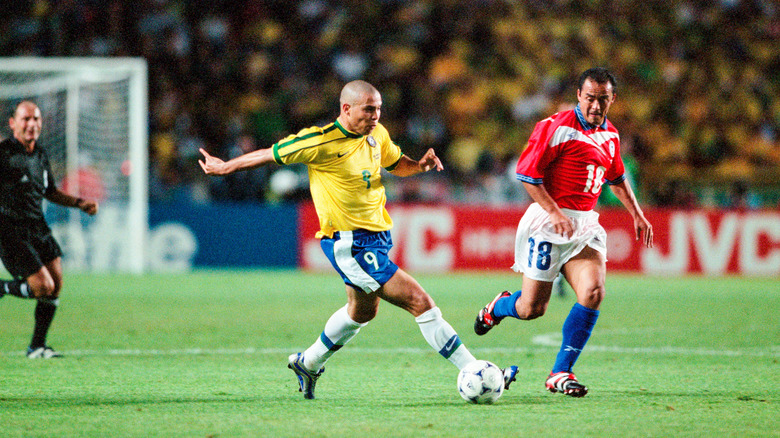Famous Athletes Who Played Through Serious Injuries
Every athlete hates getting injured. Injuries mean time off, lost practices and competitions, rehabilitation, and taking it easy — something athletes usually aren't very good at. And some injuries are serious enough to be career-ending.
Now, among some athletes, particularly from the college level all the way to the pros, the "play at all costs" mentality dominates. If you can't play while injured, then you probably shouldn't be playing at that level, as this line of thinking goes. So they take the ibuprofen or anesthesia and push through the pain.
Some injuries, such as broken bones or fully torn tendons or muscles should be so painful that no one, regardless of how high-stakes the situation is, should be playing through them. But as seen in a number of defining performances, athletes have been willing to endure that and more in their quest for victory.
The physical consequences notwithstanding, it's hard not to respect the grit such athletes put in — if anything, just not to let their teammates down. Here are 12 athletes who played through some pretty horrific injuries and in some cases came out triumphant over adversity.
Franz Beckenbauer
Franz Beckenbauer is considered Germany's most legendary soccer player, captaining the national team to a 1974 World Cup title on home soil and winning a variety of club-level trophies with German powerhouse Bayern Munich. In the 1970 World Cup in Mexico, Germany faced off with Italy in the semifinal in Mexico City, per Bleacher Report.
Knotted at 1-1, toward the end of the second half, Italian defender Pierluigi Cera fouled Beckenbauer on the edge of the penalty area. The referee ruled a free kick, but the German attack came to nothing. Beckbauer's shoulder, however, was dislocated. Normally, Germany would simply have substituted him out, but at that time, only two substitutions were permitted to today's three, and Germany had already used its two.
Instead of coming off the field and leaving his team to face Italy a man down in the half-hour of extra time, Beckenbauer had his arm put in a sling (via FIFA). He played the rest of the game injured, as Italy outfought the Germans to an exciting 4-3 victory to reach the final against Brazil. Nevertheless, Beckenbauer's grit in the face of a painful injury was not forgotten, so much so that today he is known as "Der Kaiser" (emperor) in his homeland, in part for that performance in the "Game of the Century."
Kerri Strug
American gymnast Kerri Strug, per the International Olympic Committee, missed out on Olympic glory at the Barcelona Games in 1992 when she injured herself during the trials. She had to content herself with a team bronze that year. In Atlanta '96, it looked like this unfortunate story would repeat itself.
In 1996, the U.S. women's gymnastics team made the final, where it faced the post-Soviet Commonwealth of Independent States. In the final, the two teams were in a dead heat when Dominique Moceanu went to vault for the Americans. She fell on both her attempts, leaving it up to Strug. Team USA could still capture gold, but it would depend on Strug's vault score.
Strugg went up and did her first vault with no problems until she landed on the mat. There, she injured her ankle with one vault to go. Normally, in any other competition, she would have been pulled, but the Americans needed her to finish to have a shot at winning. Since it was an Olympic final, she went for it. Strug ran toward the beam on her injured ankle, vaulted over it, and stuck her landing to the delight of the home crowd. Team USA won gold that year, thanks to Strug's determination to push through the pain barrier.
The Atlanta gold would be the pinnacle of Strug's career. As noted by the IOC, she never quite regained the form that had seen her capture American hearts in '96' and eventually retired from the sport. But she sealed her place as one of the Stars and Stripes' legendary athletes.
Byron Leftwich
Byron Leftwich never quite hit his full potential in the NFL, but in college, he was the star quarterback for Marshall University. There, in November of 2002, he played on with his teammates in a game that, by all medical standards, he should have left and gone to the hospital for treatment.
According to Bleacher Report, Marshall was playing Akron on November 2, 2002. In the first quarter of the game, Leftwich was injured and sent to the hospital for an X-ray. It turned out he had snapped his tibia, an injury that left him unable to walk. That should've been the end of the quarterback's season. But he shocked his teammates and the crowd by returning in the fourth quarter — not to watch, but to quarterback his team through the game's final moments. In an interview, Leftwich said he had no choice. Marshall was down and they needed to win.
As it turned out, Leftwich proved that even on one leg he could still throw some great passes. After throwing for a touchdown, he threw this pass from Marshall's 20-yard line all the way to Akron's 35. And when he needed to go to the next play, his teammates carried him all the way to the scrimmage line so he could receive the snap.
In the end, Leftwich's efforts were in vain. His team lost 34-20. But, he passed for 300 yards, which for a guy with only one leg, is pretty good. Was it dangerous and not the best choice for Leftwich to continue playing? Probably. But one has to respect his commitment to his teammates and their season.
Derek Redmond
Derek Redmond was a British sprinter whose career was plagued by injuries. He had dropped out of the 400m dash at the 1988 Seoul Games minutes before the starting gun went off, and according to the International Olympic Committee, had already undergone five major surgeries by the time the 1992 Barcelona Games rolled around. But 1992 looked like an opportunity to finally snap his run of bad luck.
Barcelona had gone smoothly for Redmond. He qualified for the 400-meter semifinals after winning his heat in the quarters. In the semifinals, however, Redmond would injure his leg. Around the 150-meter mark of the race, he suddenly grabbed his hamstring, falling to the ground in pain from what turned out to be a torn hamstring.
One wouldn't have blamed Redmond for letting the medics take him off the track on a stretcher. But he decided he was going to finish the race — if anything, for pride and to avoid the dreaded DNF (did not finish) on his record. So he got up and began to hop the remaining 250 meters or so on one foot in what looked like an excruciatingly painful experience, at least from his facial expression.
As Redmond limped down the track, his father Jim came down from the stands to support him across the finish line, as the crowd rose to a standing ovation. According to NPR, when asked why he did it, Jim answered that as a father, he had to prevent his son from hurting himself more. Redmond told the BBC in 2012 that his dad tried to talk him out of finishing, but pushed through the pain for pride. And with a little help, he did.
Rafa Nadal
In May 2022, Rafael Nadal, the superstar Spanish tennis player, bowed out of the Italian Open to Canadian opponent Denis Shapolapov. According to the BBC, the face-off was a three-set blowout by Shapalapov. As it turned out, however, Nadal had decided to play the match when he probably shouldn't have.
In the post-match press conference, Nadal revealed that a chronic foot injury, from which he had never fully recovered, had returned in the middle of the second set. Normally, he had to rely on painkillers just to be able to get through a practice session, let alone a match. But against Shapolapov, they either didn't work or he didn't take enough. He was gracious, however, noting that he could not pin the defeat on his foot injury alone — Shapolapov had also played a good match.
Nadal ran into similar problems at the 2022 French Open, per Bleacher Report, needing painkillers injected directly into his foot in order to be able to move it at all in some cases. While Nadal is still playing, Tennis World USA has noted that he's very likely looking at the sunset of his career, as younger, healthier players eclipse the 36-year old heavyweight who's increasingly flirting with retirement as his injury woes mount.
Kate Richardson-Walsh
At the 2012 London Games, British field hockey star Kate Richardson-Walsh had much to look forward to in Team Great Britain's opening match against Japan. The Brits were playing on home soil and hoped to make their fans proud with a medal. For Richardson-Walsh, however, the road to the podium was far from straightforward.
According to The Guardian, Team GB ran riot against the Japanese, slamming four goals past their opponents. As Richardson-Walsh went in to tackle an opponent in the closing moments of the match, however, a Japanese player accidentally struck her in the jaw with a stick and fractured it.
Although the injury in itself was not a huge deal, she did require surgery to fix her jaw. The operation itself risked ending her Olympic participation. The player herself tweeted she wished she had never made the tackle, which was unnecessary given the Brits had already won the game for all intents and purposes.
Despite the injury, Richardson-Walsh returned to captain the team through the tournament, winning a bronze medal (via Team GB's official page). She just had to wear a splint and avoid further hits to the face, which in hockey, is probably not as easy as it might be in other sports.
Terry Butcher
Following Kate Richardson-Walsh is another British athlete — English defender Terry Butcher. In a piece written for the Daily Express, Butcher explains that England in 1989 needed at least a draw against Sweden in their World Cup qualifier to make it to the World Cup in Italy the following summer.
Shortly before half-time, Butcher collided with a Swedish striker while fighting for an aerial ball and banged his head, giving him a nasty open wound. As he related in the Daily Express, the team doctor whisked him over to the sideline and stitched him up. England manager Bobby Robson then told him to go back into the fray.
The only problem was that as a defender, Butcher would have to keep challenging opponents for headers. Every time he headed the ball, he risked opening up the wound further. But he soldiered on until full time. England got a 0-0 draw and the necessary points to qualify for the World Cup.
As for Butcher, he lived up to his last name. He told the BBC he finished the game covered from head to chest in his own blood, which shone bright red on the white England shirt. Furthermore, every player on the pitch got a bit of his blood, too. But he claimed with pride that "it was a thing any Englishman would have loved to have done."
Shun Fujimoto
The Japanese men's gymnastics team was a dominant force throughout the 1960s and into the '70s. Per the International Olympic Committee, Team Japan won team gold medals at the 1960, 1964, 1968, and 1972 Olympics. At the 1976 Montreal Games, the country sought gold-medal number five against a Soviet team eager to snap their opponents' winning streak.
The Japanese and Soviet teams both made it to the final round of the men's team gymnastics event. The final opened with a tumbling exercise, which Shun Fujimoto normally would have aced with no problem. But as he went through his motions, he shattered his kneecap. While such a severe injury would under most circumstances have meant a trip straight to the hospital, Olympic gold (and history) was on the line, and because of this, Fujimoto stayed to compete.
The two hardest events would be the pommel and the rings, both of which required clean landings on both feet to achieve a maximum score. Fujimoto got through the first exercise with a 9.5. Then came the rings, which involved dropping down from nearly 8 feet up. Despite his injury, Fujimoto gave a spectacular performance (via "The Olympic Show") that netted him a 9.7 from the judges.
After his final dismount, a clearly injured Fujimoto walked back to the team area and collapsed onto a chair. But as he told "The Olympic Show," he had done his country proud, following its tradition of "self-sacrifice" for the good of his team and pride of his country. And it paid off, too, as Japan notched their fifth gold medal in a row, the team's last until Athens 2004.
Tiger Woods
In 2008, Tiger Woods achieved what was perhaps his most impressive victory — winning the U.S. Open on a broken leg.
According to Bleacher Report, Woods' 2008 win was likely the most agonizing 91 holes of his life. A few months prior to the U.S. Open in 2008, Woods underwent a third surgery on his knee, and his doctor told him to skip the major tournament. Woods refused, however, figuring that the injuries would heal after the tournament. It turns out, Woods had a torn ACL in his left knee and two stress fractures, which he didn't disclose until later.
During the tournament, Woods started off badly but recovered to dazzle the crowds by the end of each round. At the end of 72 holes, Woods ended up tied for the lead with Rocco Mediate, which meant the two had to battle it out on Monday in an 18-hole playoff, per the U.S. Open. So Woods would have to play a little longer.
And 90 holes and five rounds of golf still weren't enough to determine a winner, with the two golfers needing one more hole to decide. On that 91st hole of the 2008 U.S. Open, Woods finally won after Mediate bogeyed and Woods parred, doing so on one good leg.
Curt Schilling
The 2004 American League Championship Series was a nailbiter that pitted two of Major League Baseball's heavyweights and fierce rivals against one another — the New York Yankees and the Boston Red Sox. According to the National Baseball Hall of Fame, the Yankees ran riot, notching a 3-0 lead in the series.
With a commanding 3-9 lead, the Yankees only needed one more win to take the series and punch their ticket to the World Series. But incredibly, the Red Sox fought back to bring the series to 3-2 with two games left. Facing elimination, Boston had to win Game 6 to force a tie-breaking Game 7.
Enter Curt Schilling. The Red Sox pitcher hadn't played particularly well in Game 1 of the series, but was slated for the pitcher's mound in the crucial Game 6. There was just one problem: His poor Game 1 performance had come courtesy of some torn ankle tendons he acquired during Game 1 of the divisional series against the Los Angeles Angels. In fact, Schilling couldn't really walk, let alone pitch. In desperation, the Red Sox team doctor sutured the tendon's to Schilling's skin.
However jerry-rigged the treatment was, it worked. Schilling gave a spectacular performance, allowing four hits and only one run in seven innings. Never mind that by the end of the first inning, his sock had become famously bloody. The heroic performance was plastered across papers the following day, and the inspired performance propelled the Red Sox to a Game 7 win, and eventually Boston's first World Series Championship since 1918 (via History).
Kevin McHale
The 1987 Boston Celtics dominated the NBA's Atlantic Division, notching a 53-23 record and advancing all the way to the NBA Finals after a near early-exit against the Detroit Pistons. The Celtics playmaker that season was Minnesota native Kevin McHale (per NBA.com), who achieved quite a feat in the six-game final series against the Los Angeles Lakers — being able to play at all.
The 1987 Lakers were quite the powerhouse, boasting the likes of Kareem Abdul-Jabbar and Magic Johnson. Logically, one would have expected the Celtics players opposing to be in top form to have any hope of winning this championship but McHale, who had averaged 26 points per game, wasn't quite healthy. He had fractured his foot and could barely walk unassisted, having to use a lawn chair as a crutch.
Despite his problems, however, McHale played for approximately 40 minutes in all six games. When the Los Angeles Times asked in 1987 if he would risk shortening or ending his career for a shot at the NBA title, his reply was "Hell yes!" In the end, it turned out the injury required surgery and the placement of screws in his foot. Was it worth it in the end? Well, only McHale can say for sure, but in terms of hardware, probably not, as the Celtics ended up losing the series 4-2. But one has to admire McHale's determination and grit to push through for the good of his team.
Ronaldo
In 1998, Ronaldo Luís Nazário de Lima was the soccer world's darling, running riot in Italy's Serie A with Internazionale Milano. Italian goalkeeper Gianluigi Buffon, according to The Guardian, called Ronaldo "an alien among humans." He was that good. With such a player, Brazil had high hopes for the 1998 World Cup. The Seleção did not disappoint, reaching the final against France following a penalty-shootout win against the Netherlands.
The final was expected to be Ronaldo's time to shine. There, he would have the opportunity to square off at soccer's highest level against his opposite, French playmaker Zinedine Zidane. But when the final rosters were handed out before the game on July 12, 1998, something was wrong: Brazilian coach Mário Zagallo had omitted his star forward from the starting 11.
According to CNN, it turned out that the day before the final, Ronaldo had suffered a series of convulsions and been sent to the hospital. Hospital tests were inconclusive, so Zagallo played it safe and benched his star for the final. But the day of the final, Ronaldo insisted he would play, even if he was not at his best. Zagallo caved and changed up the team strategy at the last minute, which had been adapted to play without him.
Unsurprisingly, Ronaldo, although not obviously injured, was not himself. His performance was described as thoroughly average, while Zidane's France stormed to a 3-0 rout to lift the trophy for the first time. It's still unknown today what happened, but Ronaldo did redeem himself four years later, when Brazil won the 2002 World Cup.
